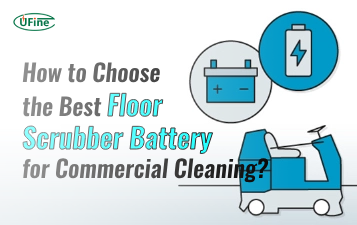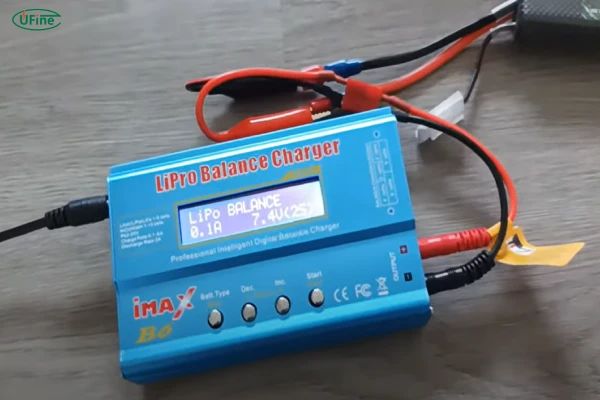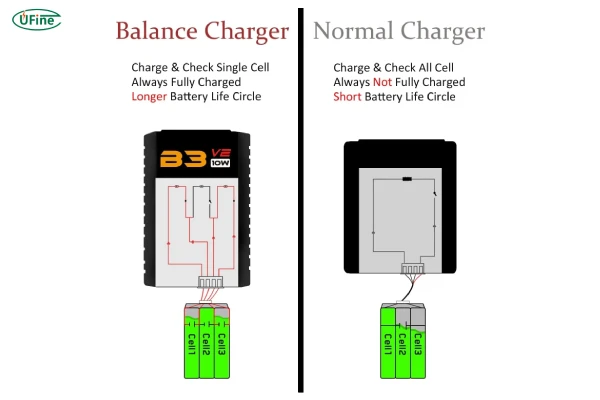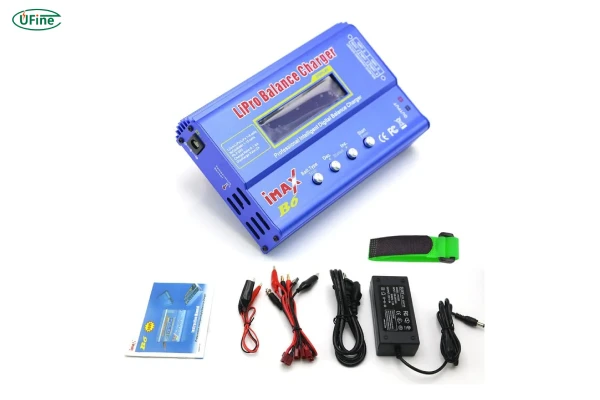Part 1. Why balance charging is non-negotiable
If you’re using LiPo batteries, one thing is absolutely non-negotiable—LiPo balance charging.
Why?
Because LiPo batteries are powerful but fragile. Every cell inside your LiPo pack must stay in sync. If one cell drifts too high or too low in voltage, your battery becomes unstable. That’s when things go wrong. Fires, swelling, performance drops—it’s just not worth the risk.
So whether you’re flying a drone, racing RC cars, or powering a robot, balance charging LiPo batteries is how you make sure your equipment runs safely and efficiently. It’s not optional. It’s essential.
Part 2. What is LiPo balance charging?
Let’s break it down simply.
A LiPo battery is made up of multiple cells, usually between 2 to 6 (2S to 6S). Each of these cells has a voltage, typically around 3.7V nominal but fully charged at 4.2V.
LiPo balance charging means charging each of those cells equally, so no cell ends up overcharged or undercharged.
Why is that important?
Because if even one cell hits over 4.2V, it can heat up, swell, or even catch fire. If a cell is undercharged, the battery’s overall performance drops, and it could even get damaged permanently.
Balance charging makes sure all cells stay within safe voltage levels throughout the charging process. It’s smart charging.
Part 3. How balance charging works
Here’s what happens during LiPo balance charging:
You plug the main battery lead into your charger.
Then, you connect the balance plug—the small connector with multiple wires.
The charger reads the voltage of each individual cell.
As it charges the pack, it adjusts how much current each cell gets.
Cells that reach 4.2V stop charging while others catch up.
The result? Every cell finishes at the same voltage—balanced and safe.
Most modern chargers handle this process automatically. Still, understanding how it works helps you catch issues early.
Part 4. Consequences of skipping balance charging
Think skipping balance charging saves time? Think again.
Here’s what might happen if you skip it:
One cell overcharges → Possible fire or explosion.
One cell undercharges → Reduced capacity and shorter flight times.
Unbalanced cells → Battery ages faster and dies sooner.
Inconsistent voltage → Poor performance and device instability.
Honestly, it’s not worth the risk. Just take the extra minute to plug in the balance lead. It could save your battery—or even your home.
Part 5. Essential tools for proper balance charging
You don’t need a workshop full of gear, but here are the basics for safe, effective LiPo balance charging:
- Balance charger (not just a standard LiPo charger)
- Balance board (if charging multiple batteries)
- LiPo-safe charging bag (for fire safety)
- Multimeter (optional, for checking voltage manually)
- Battery checker (for quick voltage readouts)
Investing in quality tools upfront makes your entire battery setup safer and longer lasting.
Part 6. Step-by-step guide to balance charging LiPo batteries
Let’s walk through the process step by step.
1. Inspect your battery
Check for puffiness, damage, or loose wires. If it looks damaged, don’t charge it.
2. Choose the right charge setting
Make sure your charger is set to “Balance Charge,” not “Charge” or “Fast Charge.”
3. Connect the main power lead
This is the thick wire, usually with an XT60, Deans, or EC3 connector.
4. Connect the balance lead
Plug the small white connector into the balance port on the charger.
5. Set the correct cell count and charge rate
Example: For a 3S 2200mAh battery, choose 3S and 2.2A (1C rate).
6. Start charging
Stay close by and monitor for heat, noise, or swelling.
7. End when the charger beeps
All cells should be at or very near 4.2V.
That’s it! Simple, safe, and totally worth it.
Part 7. Advanced techniques for power users
Already comfortable with balance charging? Here are some next-level techniques:
1. Parallel balance charging
Charge multiple batteries at once—but only if they’re the same cell count and capacity. Use a quality parallel board.
2. Data logging
Some chargers track charge cycles and voltage logs. Great for keeping an eye on battery health over time.
3. Internal resistance testing
Pro-grade chargers show each cell’s internal resistance. Higher resistance = older or weaker cell.
4. Battery storage mode
Not flying soon? Use the charger’s storage mode to set cells around 3.8V. It prolongs battery life.
Part 8. Safety precautions you can’t ignore
Balance charging is safe—if done right.
Here are must-follow tips:
- Always charge in a LiPo-safe bag or fireproof box
- Never leave a charging battery unattended
- Avoid charging near flammable materials
- Don’t overcharge—stick to 4.2V max per cell
- Check connectors for damage regularly
- Let batteries cool before charging again
Treat your batteries like the powerful energy sources they are. Respect them, and they’ll last longer—and stay safe.
Part 9. Troubleshooting common balance charging issues
Having problems? Here are quick solutions:
Charger says cell voltage mismatch.
Check for damaged balance wires or cells. Try a slow balance charge at 0.5A.
Battery won’t charge.
One or more cells may be below 3.0V. Try a NiMH mode for a minute (advanced users only), then switch back.
Cells won’t balance.
One cell could be damaged. Check with a multimeter or internal resistance reading.
Charger won’t detect battery.
Check polarity, connectors, and firmware updates on smart chargers.
Part 10. Top 5 LiPo balance chargers
Let’s look at 5 highly rated chargers in 2025 for LiPo balance charging:
1. ISDT Q8 Smart Charger
- Pros: Compact, fast, high-end UI
- Cons: Needs external power supply
- Best For: Intermediate and pro users
2. HobbyMate D6 Duo
- Pros: Dual channels, USB output
- Cons: A bit bulky
- Best For: Charging two batteries at once
3. SkyRC B6 Neo
- Pros: Affordable, reliable, simple
- Cons: Not for heavy-duty users
- Best For: Beginners and casual flyers
4. ToolkitRC M8S
- Pros: Wide compatibility, touchscreen
- Cons: Steeper learning curve
- Best For: Power users
5. Hota D6 Pro
- Pros: Dual channel, AC/DC input
- Cons: Premium price
- Best For: Home charging setups
Part 11. FAQs
Can I balance charge without a balance plug?
No. The charger needs access to each cell to balance properly.
How often should I balance charge?
Every time. It’s safer and keeps your battery healthier.
Is balance charging slower?
A little, but it’s worth the time for safety and performance.
What if my charger doesn’t have a balance mode?
Don’t use it for LiPo batteries. Invest in a proper balance charger.
Is balance charging only for LiPo batteries?
It’s essential for all multi-cell lithium-based batteries (LiPo, Li-ion, LiFePO4).
Related Tags:
More Articles

How to Choose the Best Floor Scrubber Battery for Commercial Cleaning?
Selecting the ideal floor scrubber battery ensures a long runtime, rapid charging, and minimal maintenance for efficient commercial cleaning operations.
Battery for Blower vs Battery for Leaf Vacuum: Which One Should You Choose?
Battery for blower vs leaf vacuum—learn the key differences in power, fit, and runtime to choose the right battery for your outdoor tool needs.
How to Choose the Right Battery for Blower?
Choosing the right blower battery? Consider voltage, capacity, chemistry & usage. This guide helps match the best battery for peak performance.
How to Choose the Best Insulated Battery Box for Lithium Batteries?
Choosing the Best Insulated Battery Box for Lithium Batteries? Discover key factors such as size, material, and safety for optimal protection and performance.
7 Critical Elements on a Lithium Battery Shipping Label
What must be on a lithium battery shipping label? Learn 7 key elements to ensure safety, legal compliance, and correct handling across all transport modes.






